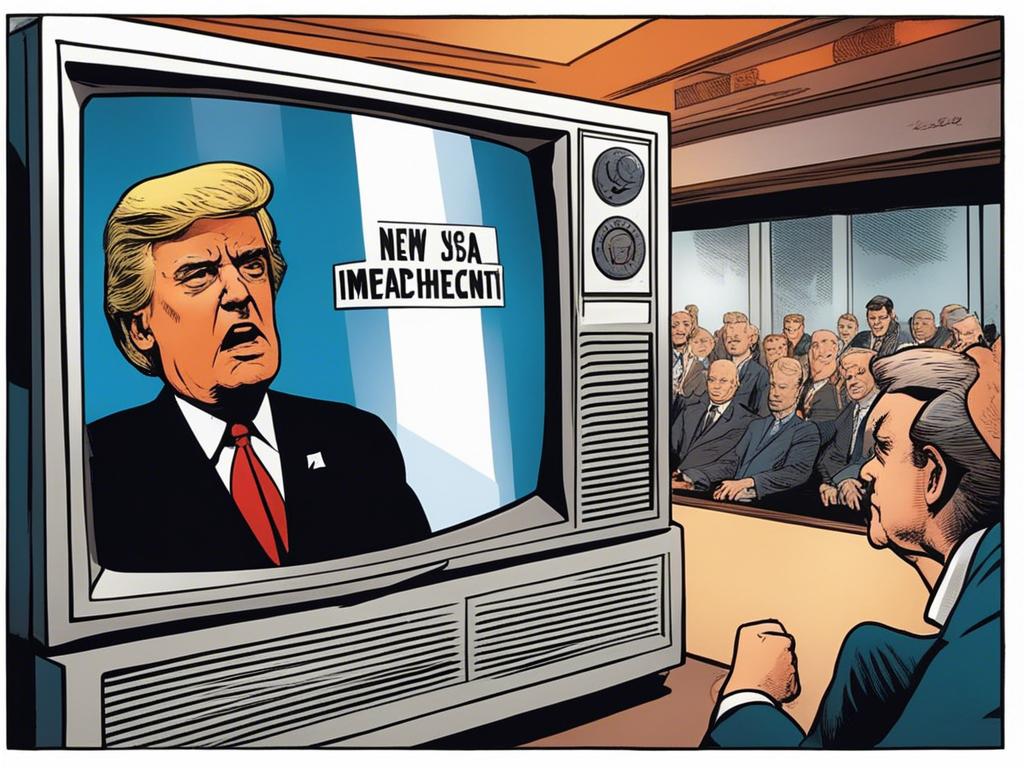Impeachment is one of the most significant tools in a democracy to hold leaders accountable for misconduct. But many citizens wonder: how can they impeach a president?
While citizens cannot directly impeach a president, they play an essential role in initiating and influencing the process through their representatives. Let’s explore the steps, constitutional framework, and how public pressure can drive impeachment proceedings.
What Does It Mean to Impeach a President?
Impeachment is a formal process outlined in Article II, Section 4 of the U.S. Constitution. It allows Congress to charge high-ranking officials, including the president, with “treason, bribery, or other high crimes and misdemeanors” as grounds for removal from office.
The process involves two key stages:
-
Impeachment by the House of Representatives: A simple majority vote is required to approve articles of impeachment.
-
Trial in the Senate: A two-thirds majority is needed to convict and remove the president from office.
It’s important to note that impeachment is not a criminal trial but a political process aimed at safeguarding public trust
.
Can Citizens Directly Impeach a President?
NO, citizens cannot directly impeach a president. The power to impeach lies solely with Congress—the House of Representatives initiates the process, and the Senate conducts the trial. However, citizens play an indirect but crucial role in this process by influencing their elected representatives through:
-
Petitions and Public Campaigns: Citizens can organize petitions demanding impeachment proceedings.
-
Contacting Representatives: By reaching out to their congressional representatives, citizens can urge them to take action.
-
Protests and Advocacy: Demonstrations and advocacy campaigns can amplify public demand for accountability.
Public opinion has historically been a driving force behind impeachment inquiries, as seen during the Nixon and Trump presidencies.
Steps in the Presidential Impeachment Process
1. Initiating an Inquiry
The impeachment process begins when members of the House of Representatives propose articles of impeachment or call for an investigation into alleged misconduct.
2. Drafting Articles of Impeachment
If evidence supports wrongdoing, the House Judiciary Committee drafts articles of impeachment detailing specific charges against the president.
3. House Vote
The full House votes on whether to approve the articles. A simple majority (50% + 1) is required for impeachment.
4. Senate Trial
Once impeached, the Senate holds a trial presided over by the Chief Justice of the Supreme Court if it involves the president. Senators act as jurors, and a two-thirds majority vote is needed for conviction and removal from office.
5. Post-Impeachment Consequences
If convicted, the president is removed from office and may also be barred from holding future public office.
Historical Examples of Presidential Impeachment
Only three U.S. presidents have been impeached:
-
Andrew Johnson (1868): Impeached for violating the Tenure of Office Act but acquitted by one vote in the Senate.
-
Bill Clinton (1998): Charged with perjury and obstruction of justice but acquitted by the Senate.
-
Donald Trump (2019 & 2021): The first president impeached twice—once for abuse of power and once for incitement of insurrection—acquitted both times.
These cases highlight how political dynamics often influence impeachment outcomes more than legal considerations.
The Role of Citizens in Holding Leaders Accountable
While citizens cannot directly impeach a president, their voices shape political decisions:
-
Electing Representatives: Voting for candidates who prioritize accountability ensures that Congress reflects public sentiment.
-
Demanding Transparency: Citizens can call for investigations into presidential actions through organized campaigns.
-
Leveraging Media and Advocacy Groups: Social media platforms and advocacy organizations amplify citizen demands for justice.
For example, during Richard Nixon’s Watergate scandal, public outrage fueled bipartisan support for his resignation before formal impeachment proceedings concluded.
Challenges in Impeaching a President
Impeaching a president is rare due to its high political stakes:
-
Partisan Divisions: Political loyalties often overshadow evidence during impeachment trials.
-
Public Opinion: Lawmakers are hesitant to act without significant public support.
-
Senate Conviction Threshold: The two-thirds majority requirement in the Senate makes conviction extremely difficult unless there’s overwhelming bipartisan agreement.
Despite these challenges, impeachment remains an essential safeguard against abuse of power.
Conclusion
Citizens may not have direct authority to impeach a president, but their influence on elected representatives is undeniable. Through advocacy, petitions, protests, and voting, they can hold leaders accountable and ensure that democracy functions as intended.
Understanding how impeachment works empowers citizens to demand integrity from those in power while preserving constitutional checks and balances.











